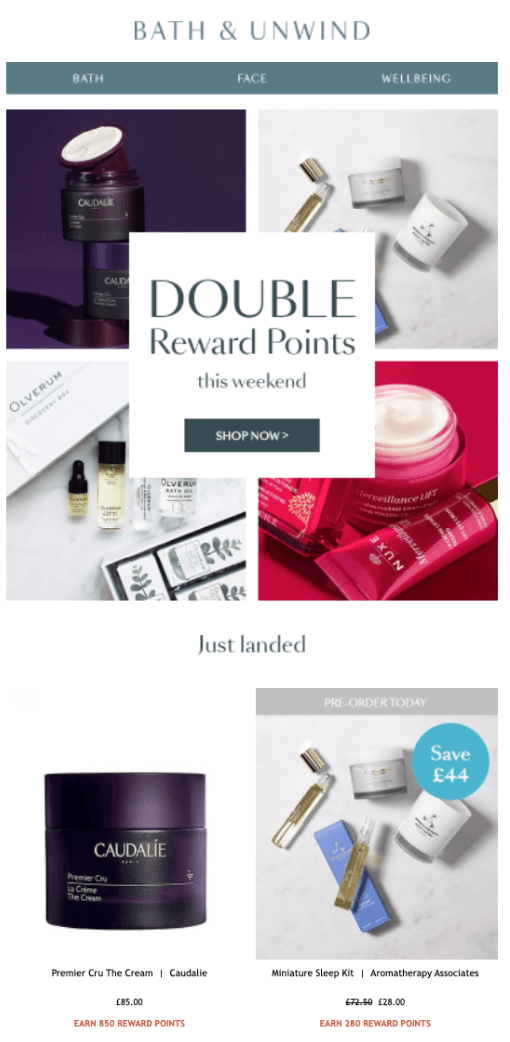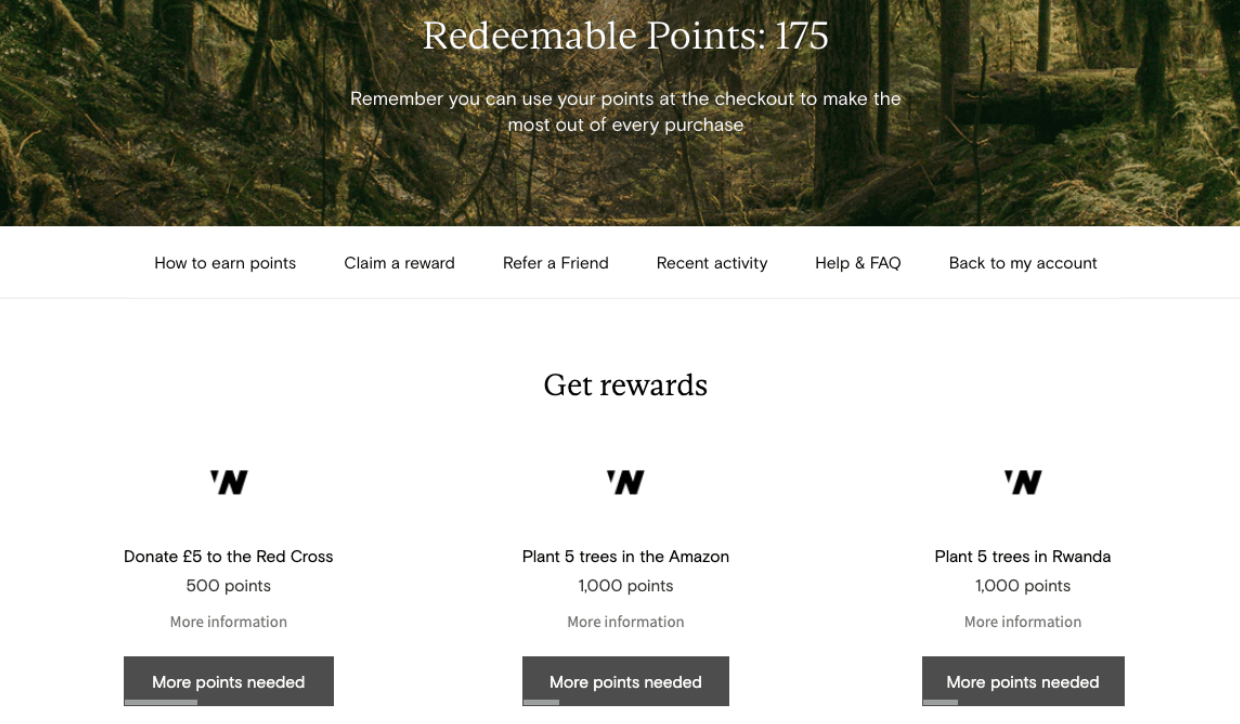The sales culture we once knew has changed. Back in simpler times, key seasonal events such as Black Friday, Valentine’s Day, and end-of-season sales meant you put on discounts for a few days at a time and won hard-earned but guaranteed sales spikes. Today, these very specific sales periods have grown longer and more frequent. For example, Black Friday 2023 lasted up to a month for some retailers. Unfortunately, as a result of this shift, shoppers expect discounts all year round and are more inclined to shop around if they don’t find the price they’re looking for.
But what if we told you discounts don’t have to be the answer every time? Our research has shown that discount alternatives make customers feel just as good as discounts do. While 76% of those we surveyed said that discounts make them feel positive towards brands, those same respondents stated that they also feel positive about brands that offer experiences, such as early access to new products (70%).
This blog post will explore six discount alternatives that can motivate customers to shop at full price, while also increasing brand loyalty. They are all easy to deliver, and even if deployed to only a small cohort of your most valuable customers, could make a real difference to your bottom line.
Loyalty points and rewards
Did you think loyalty points were something shoppers earn and then forget about? Think again! 73% of consumers say that loyalty points would motivate them to purchase during a sales period – a number that’s not very different from the 76% who said they would be motivated by discounts.
77% of surveyed shoppers also said that they feel positive or very positive about shopping with a brand that provides loyalty points that are redeemable against future purchases. Plus, 69% also say that loyalty program points are also key to making them return to a brand they haven’t bought from in a while.
Ensuring that customers have a healthy balance of points ahead of a sale can help you to win that customer back and prevent them from shopping elsewhere. You could also consider running points promotions such as double points days, or bonus points events for your loyalty program members, in place of percentage off sales.
Some brands like Bath & Unwind, have been using double point events effectively to stir up excitement around their loyalty program and reduce their reliance on discounting.

As loyalty program members see their point balance grow, they’ll return to redeem rewards. This will accelerate their next purchase and make them feel good. So much so, that they’ll continue to return to your brands to get that feeling over and over again. Their spending will also be higher: we’ve found that customers who redeem rewards have a 165% higher annual spend than customers who don’t.
Exclusive and early access to sales and products
Exclusive and early access to sales and products can provide another compelling alternative to discounts. 70% of consumers say they would be motivated to shop with a brand over the sales period if they can get early access to new products, while 72% have the same positive feelings when given early access to sales.
It is important to try to balance discounts with experiences for existing customers. You can achieve this by offering your most valuable customers early access to your sales, new products, or limited-edition items. Not only will these perks make customers feel like VIPs, but they’ll be more likely to tell others about the positive experience too.
Pinpoint who your most loyal customers are and move them into the top tier of your loyalty program. Here, let them unlock early access to your sales or new products. You could also launch an exclusive bundle or limited-edition product to loyalty program members to build that VIP feeling.
The premium skincare brand, AKT London, has an excellent loyalty program that provides exclusive perks to members in their higher loyalty tiers, in place of discounts. For example, while you can exchange points for discounts and receive bonus birthday points at their “The Beginner” level, at “The Professional” loyalty tier you’ll also receive priority access to new product releases and exclusive discounts on products.

Free or discounted shipping
81% of consumers feel positive or very positive about a brand that offers free or discounted shipping. Our research indicates that it is one of the most important factors driving consumer positivity and when offered, could certainly negate the need to also apply a discount.
When we asked, “What makes you likely to return to a brand after making a purchase?” 69% said free or discounted shipping. Similarly, when we asked, “What makes you sign up for a subscription with a brand?” 62% said the same perk would motivate them. Evidently, better shipping options are a great way to motivate customers to get involved with your loyalty program.
Free shipping allows you to replicate the feel-good factor of a financial reward without cheapening your products with discounts.
If you can’t afford free shipping for all, try offering different levels of shipping perks based on a customer’s loyalty. For example, only offer free shipping to members in the highest tier of your program. For other customers, give them a shipping discount if they spend over your AOV. This allows you to limit the impact of low-profit margins, while still providing a compelling alternative to sitewide discounts.
To limit shipping costs while maintaining a high-standard customer experience, you could also put in place elevated returns processes for customers who are most loyal to your brand.
Contribution to a charitable initiative
Today, more consumers are conscious of the way brands are contributing to social, environmental, and other charitable initiatives. The right contribution could work very effectively in place of a discount.
67% of consumers feel positive or very positive about a brand that provides them with the opportunity to contribute to charitable initiatives that are aligned with their personal values. 62% also said that this opportunity to support charitable initiatives would motivate them to make a full-price purchase over a sales period.
Customers are shopping more mindfully, prioritizing brands that align with their values. If you connect with your shoppers on an emotional level, when they’re ready to make a purchase they’ll come to you first as they already love what you’re about.
Show you’re aligned with your customers by letting them contribute to initiatives linked with their values. You could let them trade in loyalty points to plant trees. Or, spend their points on charitable donations.
The natural Food-Grown supplement brand, Wild Nutrition, have embraced a variety of features to craft an engaging loyalty program that is true to their brand. One of their key strategies has been creating a strong emotional alignment with customers.
When you belong to Wild Nutrition’s loyalty program, you can claim rewards that are aligned with your personal beliefs and give back to the planet. For example, when you reach 1,000 points you can plant five trees in Rwanda or in the Amazon. Alternatively, you can use your 1,000 points to donate to Plastic Oceans UK.

Customers will be more likely to spend with you again and pay full-price if they know their purchases aren’t only benefiting them, but the planet and others in need too. You can then also create content that shows the impact you’ve made through these initiatives and use it across your marketing to get buy-in from new customers.
Membership to an Insider community
Last but not least, we’ve found that many consumers find membership to an insider community an enticing factor when choosing who to purchase from. 55% of consumers feel positive or very positive about a brand that provides them with membership to a private community that they can use to unlock benefits over a sales period.
54% of consumers say they would be loyal to a brand if they become part of a like-minded community. This should encourage brands to give their most loyal customers membership to a VIP community that packages all their alternatives to discounts in one place.
Within this Insider community, you can post about early access to sales and give members points for engaging with key pieces of content. This will encourage customers to maintain a relationship with your brand at all times, regardless of whether you’re running a sale or offering a discount. It will also give your loyal customers something to shout about on social media, sharing the experiences they are receiving with others who will then want to join the program to get the same VIP treatment.
A great example of making the most of an Insider community is the approach by Astrid & Miyu, the contemporary jewelry brand. Astrid & Miyu give their community loyalty points for completing non-transactional activities; like making referrals, writing reviews, or creating user-generated content (UGC). They then use this as evidence and user-generated content across their site and social media to show new customers that their products are trustworthy and that being a part of their community is worthwhile because the benefits you receive outweigh the discounts you might receive elsewhere.
In conclusion
At a time when consumers are savvier with their spending, discounts still have a part to play in your day-to-day operations. But they don’t always bring in the right kind of customers, and you have to consider how you’re going to increase customer lifetime value to offset the discount you gave to bring them in the door. If a shopper buys with a discount the first time, they may expect a discount every time unless you can demonstrate that there’s something better associated with your brand that’s worth their while.
The six alternatives to discounts that we’ve highlighted here don’t just drive sales and repeat purchases. They also help you to build emotional connections that in turn, keep your returning customer rates going up and up.
Substituting promotions for alternative rewards and experiences can reduce your reliance on discounting and build stronger, long-term customer relationships that keep your profits high all year round.





